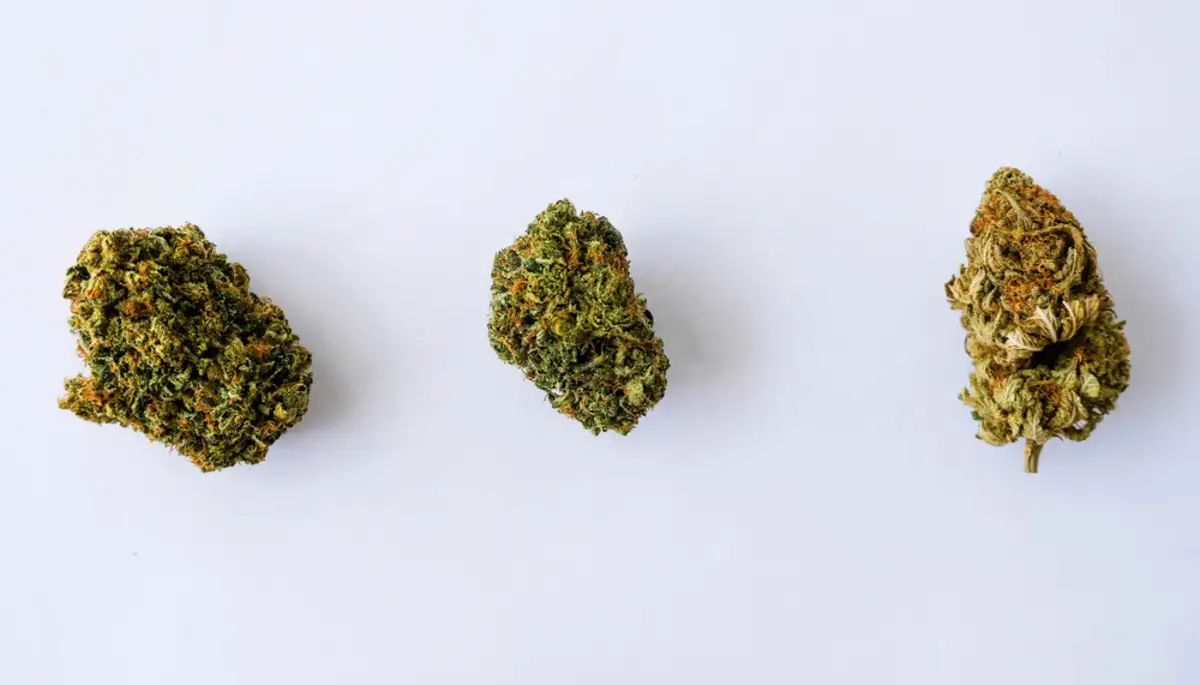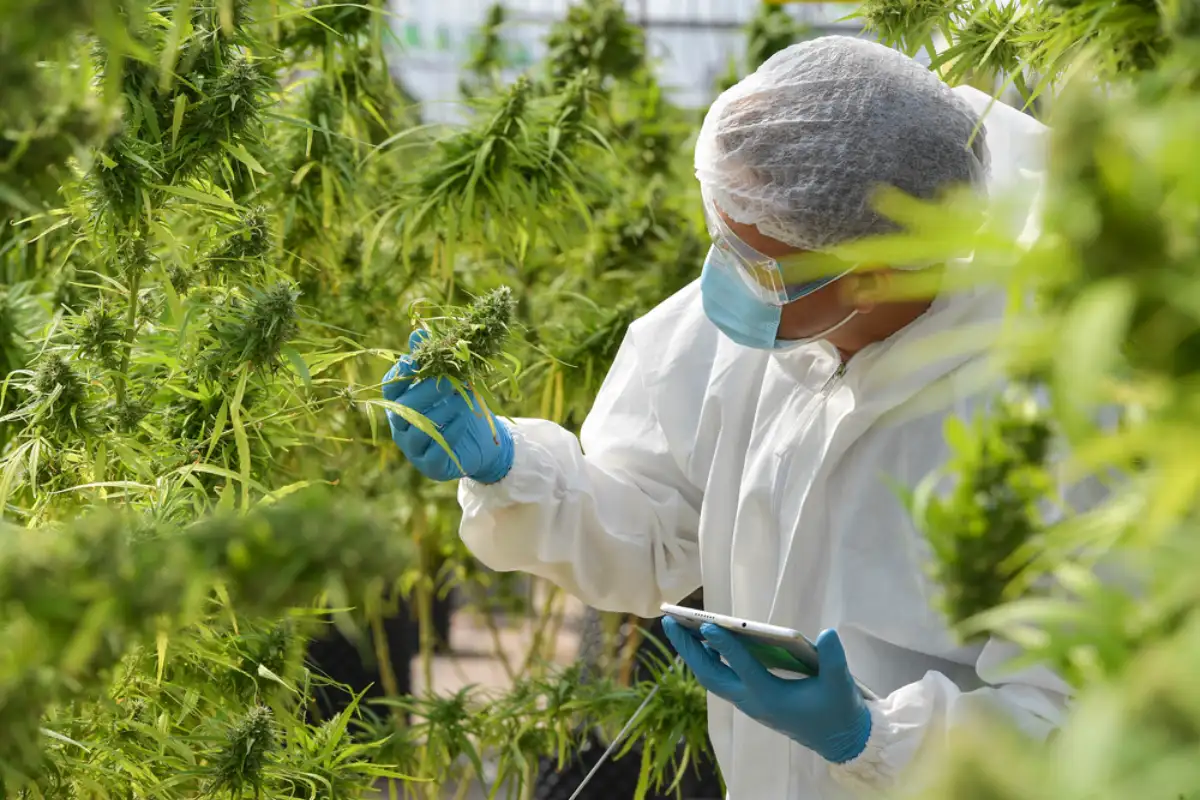Cannabis cultivation has become an increasingly popular hobby, as well as a lucrative industry, as the legalization of cannabis spreads across the globe. Whether you are a seasoned cannabis enthusiast or a curious beginner, understanding the process of how cannabis is grown is essential for achieving a successful harvest.
In this in-depth guide, we will take you through the entire journey of growing cannabis, from selecting the right strain to harvesting and curing your plants. We will explore the various factors that contribute to the growth and development of cannabis, including light, temperature, nutrients, and more.
Before diving into the nitty-gritty details, we will start by familiarizing ourselves with the basics of cannabis and why it is important to choose the right strain for your specific needs. We will delve into the differences between Indicas, Sativas, and hybrids, and provide valuable insights into selecting the perfect strain for your desired effects.
Once you have chosen your ideal strain, we will guide you through the process of setting up your cannabis grow space. Whether you opt for indoor or outdoor cultivation, we will discuss the pros and cons of each method and provide a comprehensive list of essential equipment needed for indoor growing. Additionally, we will explore the importance of selecting the right soil and nutrients, as well as understanding the specific light, temperature, and humidity requirements of cannabis plants.
With your grow space ready, we will then take you through the step-by-step process of growing cannabis. From seed germination and planting to nurturing your plants during the vegetative and flowering stages, we will share expert tips and techniques to ensure healthy growth and maximize your yield. We will also cover the crucial aspects of harvesting, drying, and curing your cannabis to achieve the best possible potency and flavor.
Even after your plants are successfully harvested, the journey is not over. Ongoing care and troubleshooting are necessary to maintain the health of your cannabis plants. We will discuss the importance of regularly inspecting for pests and diseases, as well as techniques for pruning and training your plants to optimize their growth. Additionally, we will address common issues that may arise during the cultivation process and provide effective solutions.
Whether you are a home grower looking to cultivate your own cannabis or simply curious about the intricacies of the cultivation process, this in-depth guide will equip you with the knowledge and tools needed to grow high-quality cannabis. So, let’s dive in and explore the fascinating world of cannabis cultivation together.
Understanding Cannabis: Basics and Importance
Cannabis, also known as marijuana, is a plant that has been cultivated and used by humans for thousands of years. It is known for its psychoactive properties, primarily due to the presence of a compound called delta-9-tetrahydrocannabinol (THC). However, cannabis also contains numerous other compounds, such as cannabidiol (CBD), which have gained recognition for their potential therapeutic benefits.
Understanding the basics of cannabis is essential before delving into the growing process. Here are some key points to consider:
The Different Types of Cannabis
Cannabis plants can be categorized into three main types: Indica, Sativa, and hybrids. These classifications are based on the plant’s physical characteristics, effects, and geographical origins.
- Indicas: Indica strains are known for their relaxing and sedative effects. They typically have shorter and bushier plants with broad leaves. Indicas are often used for relaxation, pain relief, and sleep aid.
- Sativas: Sativa strains are characterized by their uplifting and energizing effects. They usually have taller plants with narrow leaves. Sativas are often used for boosting creativity, focus, and mood enhancement.
- Hybrids: Hybrids are a combination of both Indicas and Sativas, offering a blend of effects from both types. Hybrid strains can be either Indica-dominant or Sativa-dominant, depending on the specific genetics.
Therapeutic Potential of Cannabis
Cannabis has gained significant attention for its potential therapeutic uses. The compounds found in cannabis, particularly THC and CBD, interact with the body’s endocannabinoid system, which plays a crucial role in regulating various physiological processes.
- THC: Delta-9-tetrahydrocannabinol (THC) is the primary psychoactive compound in cannabis. It has been found to provide pain relief, reduce nausea and vomiting, stimulate appetite, and reduce muscle spasms.
- CBD: Cannabidiol (CBD) is a non-psychoactive compound that has gained recognition for its potential therapeutic benefits. It has been studied for its anti-inflammatory, analgesic, anxiolytic, and anti-seizure properties.
The Importance of Choosing the Right Strain
Selecting the right cannabis strain is crucial, as different strains offer varying effects and therapeutic benefits. Factors to consider when choosing a strain include:
- Desired Effects: Consider whether you are seeking relaxation, pain relief, creativity, or other specific effects.
- THC and CBD Levels: Strains with higher THC levels tend to have more psychoactive effects, while strains with higher CBD levels are known for their potential therapeutic benefits without the intense psychoactive effects.
- Terpene Profiles: Terpenes are aromatic compounds found in cannabis that contribute to its unique flavors and potential therapeutic effects. Different terpenes can enhance relaxation, uplift mood, or provide other benefits.
Understanding the basics of cannabis, including the different types and their potential therapeutic applications, is essential for making informed decisions when selecting a strain for cultivation. In the next section, we will explore the factors to consider when choosing the right cannabis strain.
Choosing the Right Cannabis Strain
Choosing the right cannabis strain is a crucial step in the cultivation process. Each strain offers unique characteristics and effects, making it important to consider your personal preferences and desired outcomes. In this section, we will explore the different types of cannabis strains and provide guidance on selecting the right strain for your needs.
Indicas, Sativas, and Hybrids: What’s the Difference?
- Indica Strains:
- Characteristics: Indica strains are known for their relaxing and sedating effects. They typically have shorter and bushier plants with broad leaves.
- Effects: Indicas are often chosen for their ability to promote relaxation, reduce anxiety and stress, relieve pain, and aid in sleep.
- Popular Indica Strains: Examples of popular Indica strains include Purple Kush, Northern Lights, and Granddaddy Purple.
- Sativa Strains:
- Characteristics: Sativa strains are characterized by their energizing and uplifting effects. They usually have taller plants with narrow leaves.
- Effects: Sativas are commonly selected for their ability to enhance creativity, boost mood, increase focus, and provide a cerebral high.
- Popular Sativa Strains: Examples of popular Sativa strains include Sour Diesel, Jack Herer, and Green Crack.
- Hybrid Strains:
- Characteristics: Hybrid strains are a combination of Indica and Sativa genetics, offering a mix of effects from both types.
- Effects: The effects of hybrid strains can vary depending on whether they are Indica-dominant or Sativa-dominant. This allows for a wider range of experiences and benefits.
- Popular Hybrid Strains: Examples of popular hybrid strains include Blue Dream, Girl Scout Cookies, and OG Kush.
Considerations for Selecting the Right Strain
When choosing a cannabis strain, it is important to consider the following factors:
- Desired Effects: Determine the specific effects you are seeking from cannabis, such as relaxation, pain relief, creativity, or mood enhancement.
- THC and CBD Levels: THC is responsible for the psychoactive effects of cannabis, while CBD offers potential therapeutic benefits without the intense high. Consider the desired balance between THC and CBD levels in a strain.
- Terpene Profiles: Terpenes are aromatic compounds in cannabis that contribute to its unique flavors and potential therapeutic effects. Different terpenes can enhance relaxation, uplift mood, or provide other benefits. Consider the terpene profile of a strain to align with your preferences.
- Growing Conditions: Some strains may be more suitable for specific growing conditions, such as indoor or outdoor cultivation, as they may have different environmental requirements.
Most Popular Strains for Home Growing
If you are new to cannabis cultivation or prefer strains that are commonly grown by enthusiasts, here are some popular strains to consider:
- White Widow: Known for its potent effects and resinous buds, White Widow is a balanced hybrid strain with a high THC content.
- Blueberry: This Indica-dominant strain offers a distinct blueberry aroma and is cherished for its relaxing and euphoric effects.
- Amnesia Haze: A Sativa-dominant strain, Amnesia Haze provides a powerful cerebral high and is favored for its energizing effects.
- Northern Lights: An iconic Indica strain, Northern Lights is renowned for its relaxing and pain-relieving properties.
- Gorilla Glue #4: This hybrid strain is famous for its high THC content and sticky resin production, making it a favorite among cannabis enthusiasts.
By considering the differences between Indicas, Sativas, and hybrids, as well as the desired effects, THC and CBD levels, terpene profiles, and growing conditions, you can make an informed decision when selecting the right cannabis strain for your cultivation endeavors. In the next section, we will explore the process of setting up your cannabis grow space.
Setting Up Your Cannabis Grow Space
Setting up an appropriate cannabis grow space is crucial for the successful cultivation of your plants. Whether you choose to grow indoors or outdoors, creating the right environment and providing the necessary equipment are essential. In this section, we will explore the pros and cons of indoor and outdoor growing, discuss the essential equipment needed for indoor cultivation, and provide guidance on selecting the right soil and nutrients for your plants.
Indoor vs. Outdoor Growing: Pros and Cons
- Indoor Growing:
- Pros:
- Greater control over environmental factors, such as light, temperature, and humidity.
- Year-round cultivation is possible regardless of seasonal changes.
- Reduced risk of pests and diseases.
- Cons:
- Higher initial setup costs for equipment.
- Requires more energy consumption for lighting and ventilation.
- Limited space may restrict the number of plants you can grow.
- Outdoor Growing:
- Pros:
- Natural sunlight is free, reducing energy costs.
- Larger space allows for the potential to grow more plants.
- Plants can benefit from natural airflow and environmental conditions.
- Cons:
- Dependence on seasonal changes and weather conditions.
- Increased risk of pests, diseases, and unwanted attention.
- Limited control over environmental factors.
Consider your personal circumstances, available space, budget, and desired level of control when deciding between indoor and outdoor cultivation.
Essential Equipment for Indoor Growing
If you opt for indoor cultivation, the following equipment is essential for creating an optimal grow space:
- Grow Tent or Grow Room: Provides a controlled environment and helps contain light, temperature, and humidity.
- Lighting System: LED, HPS, or CMH lights are commonly used to provide the necessary light spectrum for plant growth.
- Ventilation System: Includes fans, exhaust fans, and carbon filters to maintain proper airflow and control temperature and humidity levels.
- Grow Medium: Options include soil, coco coir, or hydroponic setups, depending on your preference and expertise.
- Nutrients: Cannabis plants require specific nutrients at different stages of growth. Choose quality fertilizers formulated for cannabis cultivation.
- pH Testing Kit: Essential for monitoring and adjusting the pH level of the water and nutrient solution.
- Containers and Pots: Provide a suitable growing space for your plants, allowing for adequate drainage.
- Pruning and Trimming Tools: Necessary for maintaining plant health, managing growth, and harvesting.
Choosing the Right Soil and Nutrients
Selecting the appropriate soil and nutrients is crucial for the health and growth of your cannabis plants. Consider the following:
- Soil: Choose a high-quality organic soil mix specifically formulated for cannabis cultivation. Look for soil that provides good drainage and aeration while retaining moisture.
- Nutrients: Opt for nutrient solutions designed for cannabis cultivation, as they provide the essential elements needed for healthy growth. Consider both macro and micronutrients, as well as supplements and additives for specific growth stages.
Understanding the pros and cons of indoor and outdoor cultivation, selecting the right equipment, and providing the appropriate soil and nutrients are essential steps in setting up your cannabis grow space. In the next section, we will dive into the intricacies of the cannabis growing process, starting with seed germination and planting.
The Cannabis Growing Process
The process of growing cannabis involves several stages, from seed germination to harvesting and curing. In this section, we will guide you through the step-by-step process of cultivating cannabis, providing valuable insights and tips for each stage.
Seed Germination and Planting
- Seed Selection: Choose high-quality cannabis seeds from reputable sources. Consider the strain, desired effects, and growing conditions.
- Germination Methods: Explore different germination methods such as paper towel, water soaking, or using germination cubes. Ensure a warm and moist environment for successful germination.
- Planting the Germinated Seeds: Once the seeds have sprouted, carefully transfer them to a growing medium or a starter pot. Maintain a favorable environment with proper lighting, temperature, and humidity.
Vegetative Stage: Healthy Growth Practices
- Providing Adequate Light: Ensure your plants receive sufficient light during the vegetative stage. Use appropriate lighting systems and maintain a consistent light schedule of 16-18 hours of light per day.
- Nutrient Feeding: Begin feeding your plants with a balanced nutrient solution suitable for the vegetative stage. Pay attention to the specific nutrient requirements of your chosen strain.
- Watering and Irrigation: Water your plants regularly, allowing the soil to dry out slightly between watering to prevent overwatering. Use pH-balanced water to maintain optimal nutrient uptake.
- Pruning and Training: As your plants grow, consider pruning and training techniques such as topping, low-stress training (LST), or defoliation to promote bushier growth and maximize light penetration.
Flowering Stage: Timing and Care
- Changing the Light Cycle: To initiate flowering, adjust the light cycle to 12 hours of light and 12 hours of uninterrupted darkness. This signals the plants to transition from the vegetative stage to the flowering stage.
- Nutrient Adjustment: Adjust the nutrient composition to support flowering. Increase phosphorus and potassium levels while reducing nitrogen levels.
- Managing Light, Temperature, and Humidity: Maintain consistent light cycles, temperature, and humidity levels during the flowering stage. Avoid excessive heat or humidity, which can lead to issues such as bud rot or mold.
- Trichome Monitoring: Regularly inspect the trichomes, small resin glands on the flowers, to determine the optimal harvest time. Trichomes change color from clear to cloudy or amber as the plants near maturity.
Harvesting, Drying, and Curing Your Cannabis
- Harvesting: Harvest your plants when the trichomes have reached the desired level of maturity. Use sharp scissors or pruning shears to carefully trim the branches.
- Drying: Hang the trimmed branches upside down in a cool, dark, and well-ventilated space to dry. Maintain appropriate temperature and humidity levels to prevent mold or mildew.
- Curing: After drying, transfer the dried buds to airtight containers and cure them for several weeks. This curing process enhances flavor, aroma, and smoothness of the final product.
Remember, each strain may have specific requirements and growth patterns. Monitoring your plants closely, adjusting nutrient levels, and providing proper care throughout the growing process will contribute to a successful harvest. In the next section, we will discuss ongoing care and troubleshooting techniques for your cannabis plants.
Ongoing Cannabis Plant Care and Troubleshooting
Once your cannabis plants have reached the flowering stage, ongoing care and troubleshooting become essential to ensure their health and maximize yield. In this section, we will discuss the importance of regularly inspecting your plants for pests and diseases, techniques for pruning and training, and common issues that may arise during the cultivation process.
Regularly Inspect for Pests and Diseases
- Pest Prevention: Implement preventive measures such as maintaining cleanliness, using pest-resistant strains, and regularly inspecting your plants for signs of pests.
- Common Cannabis Pests: Familiarize yourself with common pests that can affect cannabis plants, such as spider mites, aphids, whiteflies, and fungus gnats. Learn to identify their presence and implement appropriate pest control methods.
- Disease Prevention: Practice proper sanitation, avoid overwatering, and provide adequate airflow to minimize the risk of diseases such as powdery mildew, bud rot, or root rot.
Pruning and Training Your Cannabis Plans
- Pruning Techniques: Regularly prune your plants to remove dead or dying leaves, improve light penetration, and promote airflow. Use clean and sharp pruning tools to avoid damaging the plants.
- Topping and FIMming: Topping involves removing the top growth of the main stem to promote lateral branching. FIMming is a similar technique that involves pinching off a portion of the new growth. These techniques can increase yield and create a bushier plant.
- Low-Stress Training (LST): LST involves gently bending and tying down branches to encourage a more even canopy and maximize light exposure to lower branches.
Common Issues and How to Solve Them
- Nutrient Deficiencies and Excesses: Learn to identify common nutrient deficiencies and excesses, such as nitrogen, phosphorus, or potassium deficiencies. Adjust nutrient levels accordingly to restore balance.
- pH Imbalance: Monitor and maintain the pH level of your soil or hydroponic system to ensure optimal nutrient uptake. Adjust the pH using pH-up or pH-down solutions as needed.
- Overwatering and Underwatering: Find the right balance in watering your plants. Overwatering can lead to root rot and other issues, while underwatering can cause nutrient deficiencies and stunted growth. Monitor the moisture levels of the soil and adjust watering accordingly.
- Light Burn and Light Stress: Be cautious with the distance between your lights and the canopy to avoid light burn. Adjust the height or intensity of the lights if you notice signs of stress, such as yellowing or bleaching of leaves.
By regularly inspecting your plants, implementing pest prevention measures, practicing pruning and training techniques, and addressing common issues promptly, you can ensure the health and vitality of your cannabis plants. Remember that each plant may have unique needs, so closely monitor their growth and make adjustments accordingly. With proper care, you can maximize your harvest and enjoy the fruits of your labor.






